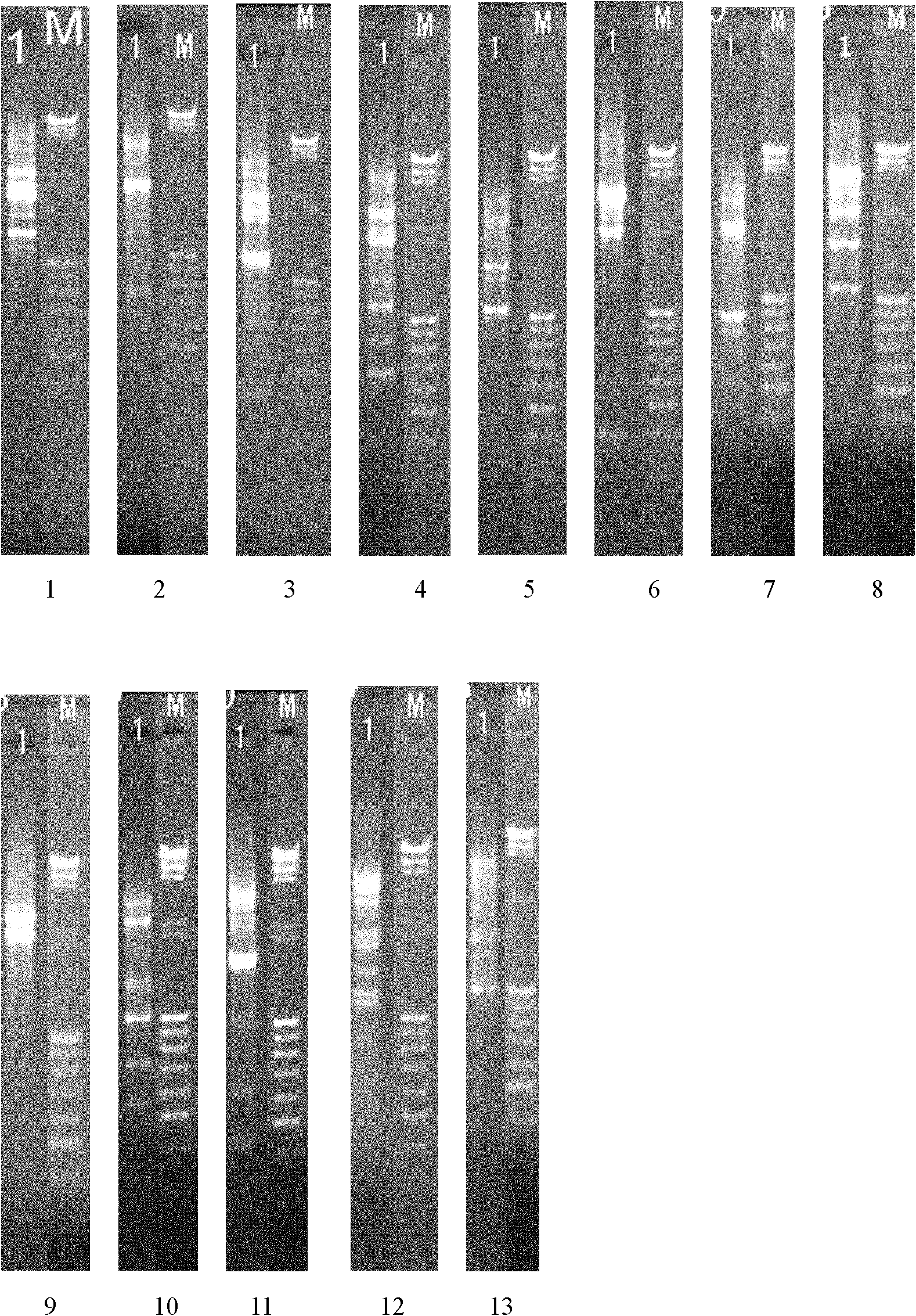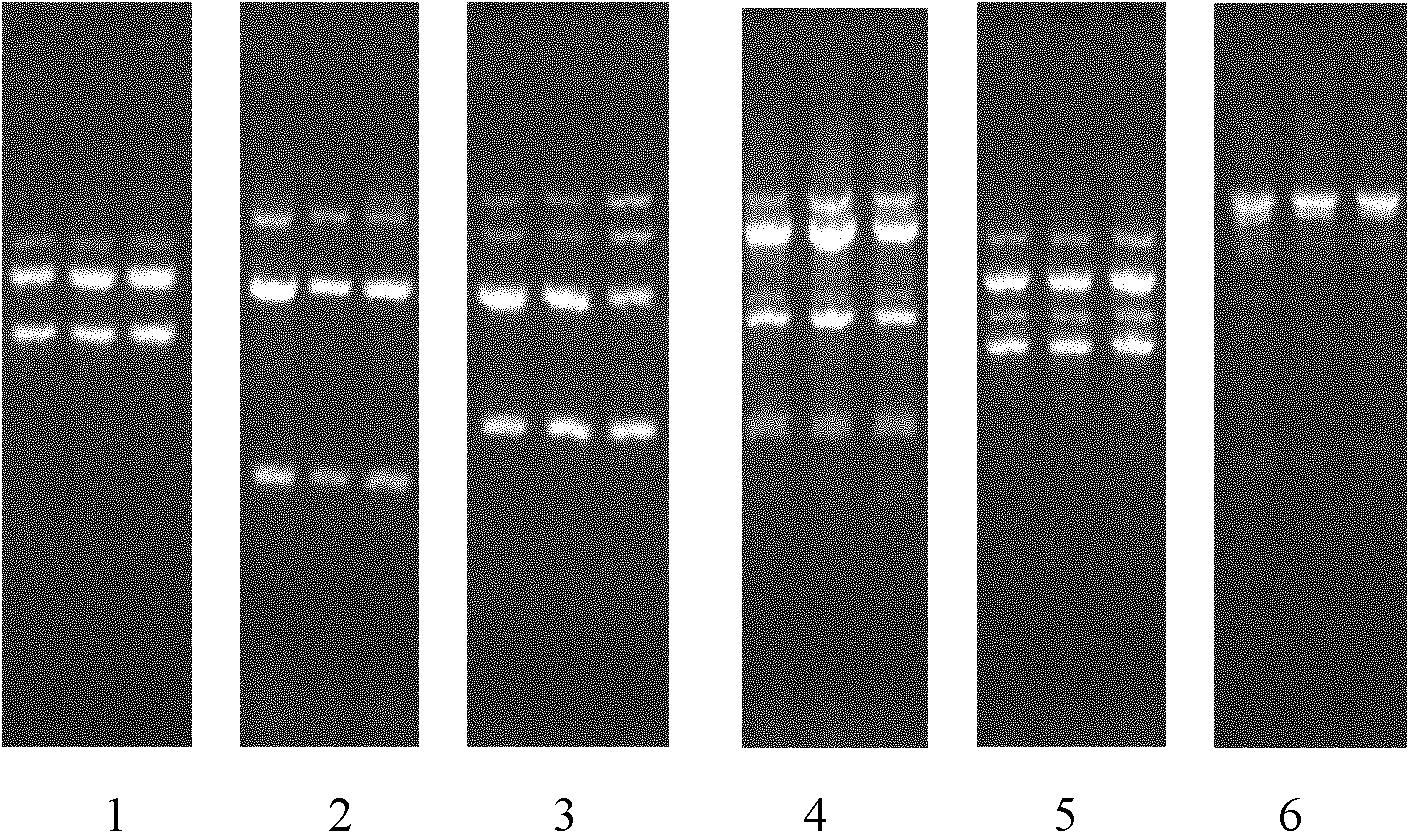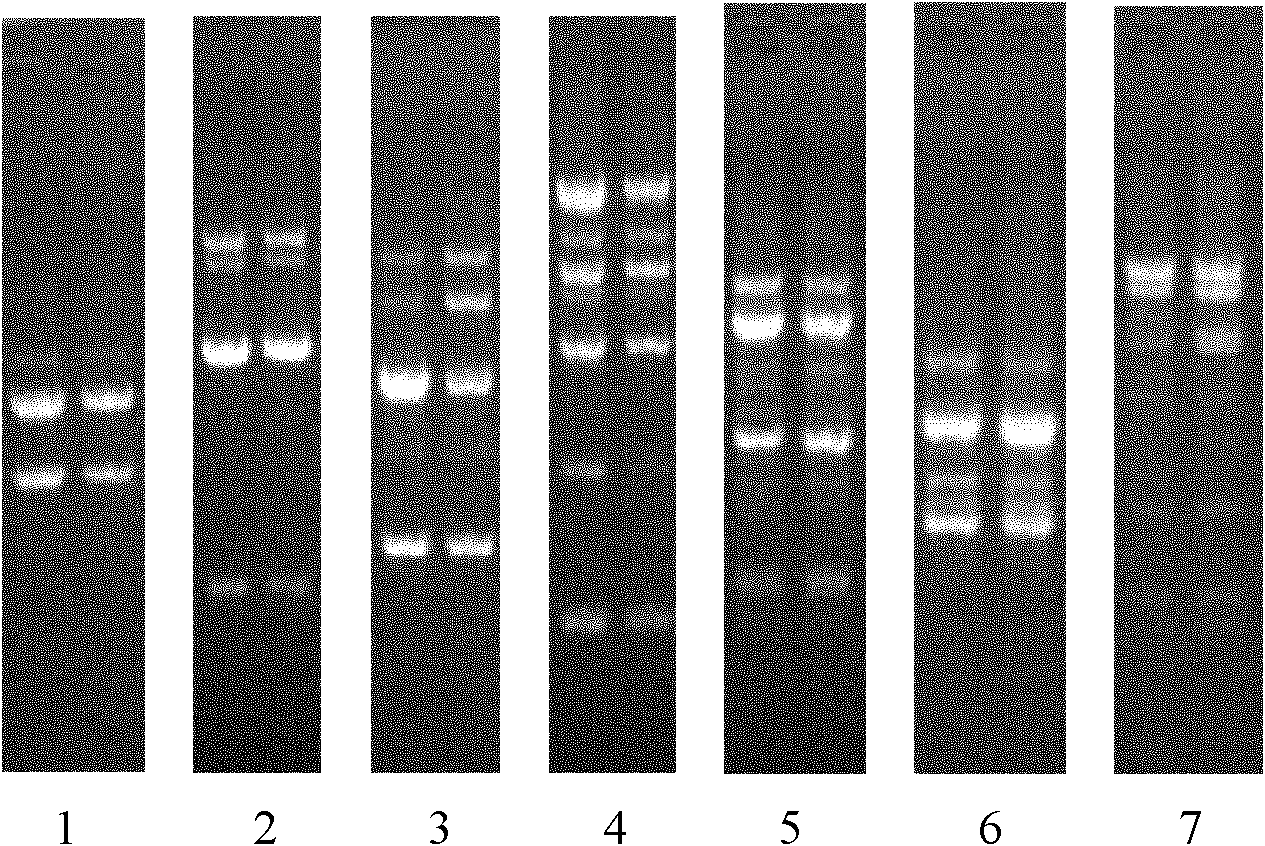Identification method for paecilomyces cicadae strain
A technology for strains and strains of Paecilomyces cicadae, which is applied in the field of molecular biology and can solve problems such as identification of strains between species and within species with small morphological differences.
- Summary
- Abstract
- Description
- Claims
- Application Information
AI Technical Summary
Problems solved by technology
Method used
Image
Examples
Embodiment 1
[0097] The stability test of embodiment 1RAPD fingerprint collection:
[0098] Test operation:
[0099] 1. conventional method extracts the DNA of Paecilomyces cicadae strain CGMCC No.3453, adopts primer S6, S10, S31, S80, OPV-14, OPW-06, OPC-10 carries out polymerase chain reaction (PCR) amplification, Then agarose electrophoresis was performed to detect the RAPD band pattern.
[0100] 2. PCR reaction conditions are as follows:
[0101] Reaction system: volume 25ul, DNA: 20-50ng, Mg 2+ : 50n mol, dNTP: 5n mol, primer: 10p mol, Taq enzyme: 1.5U (TAKARA Ex Taq), enzyme reaction buffer: 2.5ul (TAKARA Ex Taq Buffer), add double distilled water to 25ul, use a pipette Pipette evenly.
[0102] The PCR reaction conditions were 95°C for 3 minutes, followed by 95°C for 40 seconds, 56°C for 1 minute, 72°C for 2 minutes, and 40 cycles, then extended at 72°C for 5 minutes, and finally cooled to 4°C.
[0103] 1. Agarose gel electrophoresis, gel: 1.5% agarose gel; buffer: 1X TBE buffer...
Embodiment 2
[0109] Example 2, the RAPD polymorphism similarity of the DNA of Paecilomyces cicadae strain CGMCC No.3453 extracted in different batches:
[0110] Test operation:
[0111] 1. Get the DNA of Paecilomyces cicadae strain CGMCC No.3453 that different batches extract, carry out polymerase chain reaction (PCR) with primer S6 respectively, S10, S31, S33, OPV-14, OPW-06, OPC-10 ) amplification, followed by agarose electrophoresis to detect the RAPD band pattern.
[0112] 2. PCR reaction conditions are as follows:
[0113] Reaction system: volume 25ul, DNA: 20-50ng, Mg 2+ : 50n mol, dNTP: 5n mol, primer: 10p mol, Taq enzyme: 1U (TAKARA Ex Taq), enzyme reaction buffer: 2.5ul (TAKARA Ex Taq Buffer), add double distilled water to 25ul, pipette uniform.
[0114] The PCR reaction conditions were 95°C for 3 minutes, followed by 95°C for 40 seconds, 56°C for 1 minute, 72°C for 2 minutes, and 40 cycles, then extended at 72°C for 5 minutes, and finally cooled to 4°C.
[0115] 3. Agarose g...
Embodiment 3
[0121] Embodiment 3, RAPD similarity test of sample DNA of different passage numbers of the same bacterial strain:
[0122] Test operation:
[0123] 1. Extract the DNA of four samples of different passage numbers of the same Paecilomyces cicadae strain CGMCC No.3453, and use RAPD primers S6, S10, S31, OPV-14, and OPW-06 to carry out polymerase chain reaction (PCR) amplification. increase, and then perform agarose electrophoresis to detect the RAPD band pattern.
[0124] 2. PCR reaction conditions are as follows:
[0125] Reaction system: volume 25ul, DNA: 20-50ng, Mg 2+ : 50n mol, dNTP: 5n mol, primer: 10p mol, Taq enzyme: 1.5U (TAKARA Ex Taq), enzyme reaction buffer: 2.5ul (TAKARA Ex Taq Buffer), add double distilled water to 25ul, use a pipette Pipette evenly.
[0126] The PCR reaction conditions were 95°C for 3 minutes, followed by 95°C for 40 seconds, 56°C for 1 minute, 72°C for 2 minutes, and 40 cycles, then extended at 72°C for 5 minutes, and finally cooled to 4°C. ...
PUM
 Login to View More
Login to View More Abstract
Description
Claims
Application Information
 Login to View More
Login to View More - R&D
- Intellectual Property
- Life Sciences
- Materials
- Tech Scout
- Unparalleled Data Quality
- Higher Quality Content
- 60% Fewer Hallucinations
Browse by: Latest US Patents, China's latest patents, Technical Efficacy Thesaurus, Application Domain, Technology Topic, Popular Technical Reports.
© 2025 PatSnap. All rights reserved.Legal|Privacy policy|Modern Slavery Act Transparency Statement|Sitemap|About US| Contact US: help@patsnap.com



